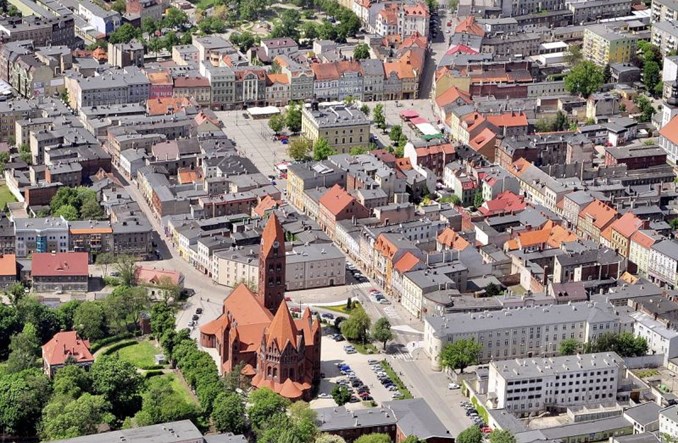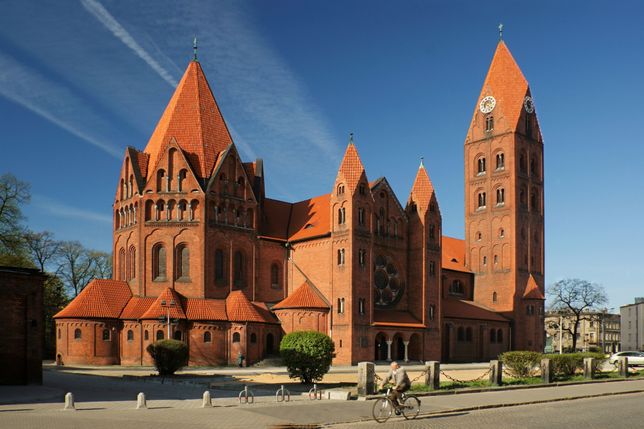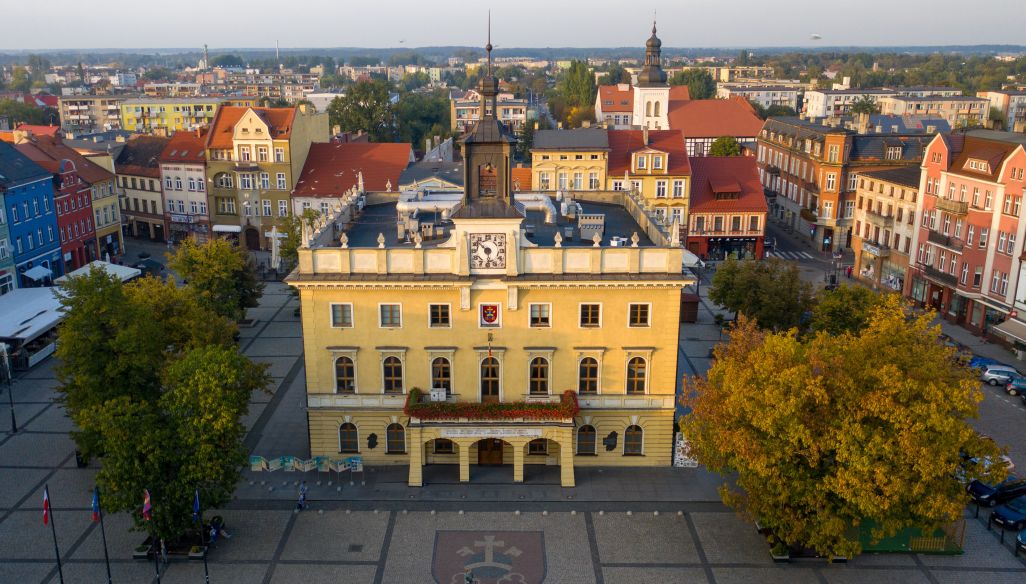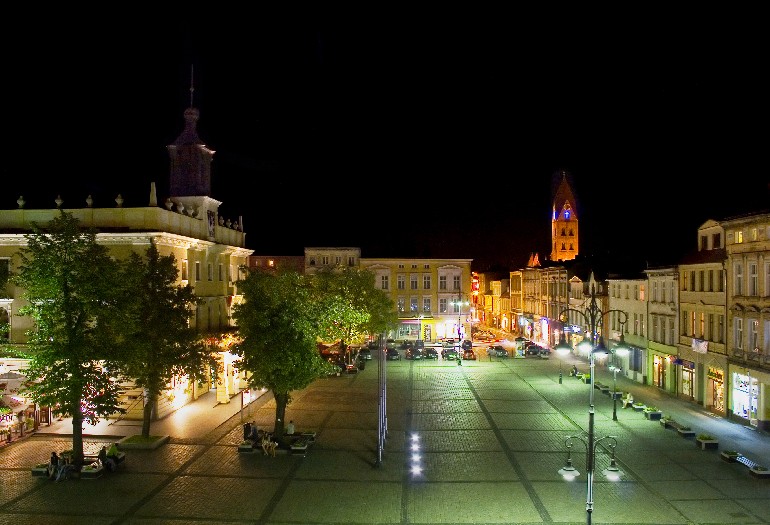Post by Bonobo on Jan 22, 2011 22:01:52 GMT 1
Chinese government's internet map brings a little bit of Poland to Britain
Newly-launched Map World contains a few howlers, including the new English towns of Ostrow Wielkopolski and Bashmakova
Map World The Chinese Map World website showing Ostrow Wielkopolski near Watford.
The Polish town is just one of several mysterious additions to the map of Britain by Map World, a service launched this week to help Chinese internet surfers navigate their way around the globe in English.
Drivers using Map World to seek a route from north Wales to Chester, however, might be surprised to find themselves expected to go via a place called Bashmakova. And the road from Darlington to Middlesbrough goes by a mysterious new town called Chishmy.
The latter name, when Googled, turns out to belong to a town with a pretty Orthodox-looking church in the Republic of Bashkortostan on the southern fringes of the Russian Federation. Chishmy lies 40 miles west of Bashkortostan's capital, Ufa.
The new places the Chinese have added to Britain are, in fact, foreign towns and cities that have somehow slipped across the globe.
Bashmakova, for example, sits astride a main railway line 300 miles south-east of Moscow. The real Ostrow Wielkopolski lies south of Poznan and west of Lodz.
www.guardian.co.uk/news/blog/2011/jan/20/china-internet-map-howlers
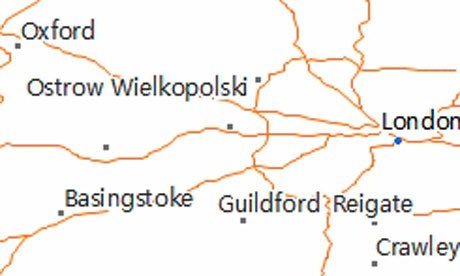
Ostrów Wielkopolski (often abbreviated Ostrów Wlkp., formerly called only Ostrów or Ostrowo, Latin: Ostrovia) is a town in central Poland with 72,360 inhabitants (2008), situated in the Greater Poland Voivodeship
en.wikipedia.org/wiki/Ostr%C3%B3w_Wielkopolski
Recently, a small fortified dwelling dating from the 10th century was discovered on the north-east side of the town's limits. An archeological excavation is now in progress.
Ostrów received town privileges in 1404 but the economic stagnation caused by fires, wars, and a weak 16th century nobility, led to the town’s officials dropping its town status in 1711. In 1714, one of the nobility of Ostrów, Jan Jerzy Przebendowski intervened at the royal court, for the status to be reinstated. By the power of a Royal Marshall (English: Marshal), Franciszek Bielinski, the town received its status back with greater privileges. Another noble family, the Radziwiłłowie took patronage over the town and looked over its many investments. The care of the town’s owners, work of its people, dedication of its officials and its location, have favored the town’s continuous growth. In Ostrów, a railroad hub was formed and became a vital point of the town’s development. It also helped to establish its prominent status on the local and national scene. During the time of Partition and both World Wars, the town had become an important source for nationalist movements. One of the town’s historic episodes was the so called Republic of Ostrów (Republika Ostrowska), which was the citizens’ upheaval of 1918. No blood was shed at that upheaval and all political powers were taken over from the Prussian authorities. In between the First and Second WW, Ostrów was one of the fastest growing towns: the number of inhabitants doubled, showy houses were built and modern Railcar Manufacturing (Fabryka Wagon) began.
During World War II, a Nazi labor camp Staatspolizeistelle Litzmannstadt Arbeitserziehungslager Ostrowo[1] operated within the town's limits, where 193 people died. The town was one of the major anti-Nazi conspiracy centers in the Great Poland region. In 1941, after the Gestapo’s crackdown on the headquarters of the Poznań branch of the underground army Union for Armed Struggle-ZWZ, the headquarters were moved to Ostrów. From here the re-structure of the Poznań region of the Union was conducted.



Pics from this gallery
mapy.eholiday.pl/galeria-ostrow_wielkopolski-ostrow_wielkopolski-ostrow_wielkopolski-4.html
Newly-launched Map World contains a few howlers, including the new English towns of Ostrow Wielkopolski and Bashmakova
Map World The Chinese Map World website showing Ostrow Wielkopolski near Watford.
The Polish town is just one of several mysterious additions to the map of Britain by Map World, a service launched this week to help Chinese internet surfers navigate their way around the globe in English.
Drivers using Map World to seek a route from north Wales to Chester, however, might be surprised to find themselves expected to go via a place called Bashmakova. And the road from Darlington to Middlesbrough goes by a mysterious new town called Chishmy.
The latter name, when Googled, turns out to belong to a town with a pretty Orthodox-looking church in the Republic of Bashkortostan on the southern fringes of the Russian Federation. Chishmy lies 40 miles west of Bashkortostan's capital, Ufa.
The new places the Chinese have added to Britain are, in fact, foreign towns and cities that have somehow slipped across the globe.
Bashmakova, for example, sits astride a main railway line 300 miles south-east of Moscow. The real Ostrow Wielkopolski lies south of Poznan and west of Lodz.
www.guardian.co.uk/news/blog/2011/jan/20/china-internet-map-howlers

Ostrów Wielkopolski (often abbreviated Ostrów Wlkp., formerly called only Ostrów or Ostrowo, Latin: Ostrovia) is a town in central Poland with 72,360 inhabitants (2008), situated in the Greater Poland Voivodeship
en.wikipedia.org/wiki/Ostr%C3%B3w_Wielkopolski
Recently, a small fortified dwelling dating from the 10th century was discovered on the north-east side of the town's limits. An archeological excavation is now in progress.
Ostrów received town privileges in 1404 but the economic stagnation caused by fires, wars, and a weak 16th century nobility, led to the town’s officials dropping its town status in 1711. In 1714, one of the nobility of Ostrów, Jan Jerzy Przebendowski intervened at the royal court, for the status to be reinstated. By the power of a Royal Marshall (English: Marshal), Franciszek Bielinski, the town received its status back with greater privileges. Another noble family, the Radziwiłłowie took patronage over the town and looked over its many investments. The care of the town’s owners, work of its people, dedication of its officials and its location, have favored the town’s continuous growth. In Ostrów, a railroad hub was formed and became a vital point of the town’s development. It also helped to establish its prominent status on the local and national scene. During the time of Partition and both World Wars, the town had become an important source for nationalist movements. One of the town’s historic episodes was the so called Republic of Ostrów (Republika Ostrowska), which was the citizens’ upheaval of 1918. No blood was shed at that upheaval and all political powers were taken over from the Prussian authorities. In between the First and Second WW, Ostrów was one of the fastest growing towns: the number of inhabitants doubled, showy houses were built and modern Railcar Manufacturing (Fabryka Wagon) began.
During World War II, a Nazi labor camp Staatspolizeistelle Litzmannstadt Arbeitserziehungslager Ostrowo[1] operated within the town's limits, where 193 people died. The town was one of the major anti-Nazi conspiracy centers in the Great Poland region. In 1941, after the Gestapo’s crackdown on the headquarters of the Poznań branch of the underground army Union for Armed Struggle-ZWZ, the headquarters were moved to Ostrów. From here the re-structure of the Poznań region of the Union was conducted.



Pics from this gallery
mapy.eholiday.pl/galeria-ostrow_wielkopolski-ostrow_wielkopolski-ostrow_wielkopolski-4.html








